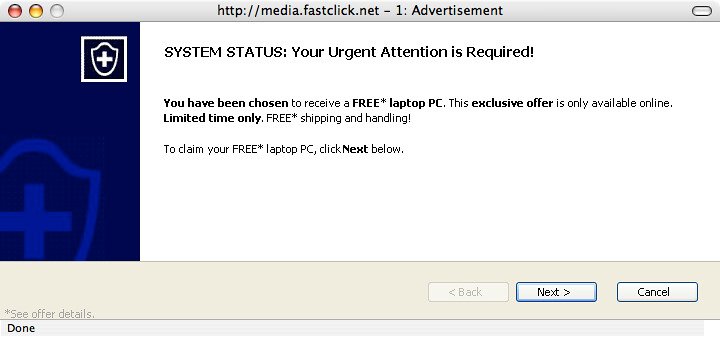In the vast virtual sea of digital advertising, a quiet storm has been brewing. Advertising nemeses, armed with cutting-edge technology, have set sail on a mission: to banish intrusive ads from our online realms. These cunning warriors are none other than ad blockers, the gatekeepers who have sparked a ripple effect on digital ad strategies. In this article, we embark on a journey to unravel the intricate web of consequences woven by the rise of ad nixing. Brace yourselves for a voyage through the treacherous waters of advertising’s ever-evolving landscape, where the clash between consumer desires and marketer’s agendas threatens to reshape the way we engage with advertisements. Join us as we navigate through this murky realm, exploring the effects, challenges, and potential solutions that emerge when ad blockers hoist their digital sails. 

In today’s digital landscape, the rise of ad nixing and the unravelling growth of ad blockers have had a profound impact on digital ad strategies. As advertisers strive to reach their audiences in the most effective and engaging way, understanding the complex ripple effect of ad blockers on digital advertising is crucial for success. rnrnOne of the main challenges posed by ad blockers is their ability to prevent the display of traditional banner and display ads to users who have installed them. This has forced advertisers to think outside the box and explore new ways to deliver their messages. For instance, native advertising has emerged as a powerful alternative, seamlessly blending promotional content with the user’s experience, making it harder for ad blockers to detect and block. Additionally, video ads have gained popularity due to their captivating nature and ability to engage viewers. By utilizing targeted ad placements within videos, advertisers can effectively overcome the challenges posed by ad blockers and deliver their messages to their intended audience.rn rn
rn rnrnTo maximize digital advertising ROI in the era of ad nixing, advertisers need to adopt key recommendations and tactics. Firstly, it’s essential to prioritize creating high-quality, relevant and valuable content that resonates with the target audience. By delivering content that users find genuinely useful or entertaining, ad blockers become less of a hurdle. Secondly, leveraging data and advanced targeting techniques enables advertisers to deliver their ads to specific customer segments that are less likely to have ad blockers installed, maximizing reach and engagement. Lastly, embracing alternative advertising channels such as social media platforms and influencers can help diversify an ad strategy, tapping into new pools of potential customers.rnrnBy reimagining digital ad strategies and understanding the complexities surrounding the impact of ad nixing and ad blockers, advertisers can stay ahead of the game and ensure their messages reach the intended audience effectively. By overcoming challenges and adapting to new tactics such as native advertising, targeted placements, and diversified channels, advertisers can maximize their digital advertising ROI in this ever-evolving landscape. The era of ad nixing may seem daunting, but with an open mind and a strategic approach, advertisers can turn it into an opportunity for growth and success.
rnrnTo maximize digital advertising ROI in the era of ad nixing, advertisers need to adopt key recommendations and tactics. Firstly, it’s essential to prioritize creating high-quality, relevant and valuable content that resonates with the target audience. By delivering content that users find genuinely useful or entertaining, ad blockers become less of a hurdle. Secondly, leveraging data and advanced targeting techniques enables advertisers to deliver their ads to specific customer segments that are less likely to have ad blockers installed, maximizing reach and engagement. Lastly, embracing alternative advertising channels such as social media platforms and influencers can help diversify an ad strategy, tapping into new pools of potential customers.rnrnBy reimagining digital ad strategies and understanding the complexities surrounding the impact of ad nixing and ad blockers, advertisers can stay ahead of the game and ensure their messages reach the intended audience effectively. By overcoming challenges and adapting to new tactics such as native advertising, targeted placements, and diversified channels, advertisers can maximize their digital advertising ROI in this ever-evolving landscape. The era of ad nixing may seem daunting, but with an open mind and a strategic approach, advertisers can turn it into an opportunity for growth and success.
Q&A
Q: What is ad nixing?
A: Ad nixing refers to the use of ad blockers, software or browser extensions that prevent online advertisements from being displayed on websites.
Q: Why are ad blockers gaining popularity?
A: Ad blockers have gained popularity due to the increasing number of intrusive and irrelevant online advertisements. Users often find these ads disruptive, leading them to choose ad blockers to enhance their browsing experience.
Q: How do ad blockers impact digital ad strategies?
A: Ad blockers significantly disrupt digital ad strategies by blocking ads altogether. This results in reduced visibility and reach for advertisers, making it harder for them to effectively engage with their target audience.
Q: What are the implications of ad nixing on advertisers?
A: Ad nixing poses a significant challenge for advertisers as it limits their ability to deliver targeted ads, generate revenue, and gather data for optimization. This forces advertisers to explore alternative strategies to reach their desired audience.
Q: What are some alternatives for advertisers affected by ad nixing?
A: Advertisers can explore native advertising, influencer marketing, or sponsored content that are less likely to be blocked by traditional ad blockers. They can also focus on creating high-quality, engaging content that users are less likely to want to block.
Q: How are publishers affected by ad nixing?
A: Ad nixing affects publishers by reducing their ad revenues. With fewer ads being displayed, publishers struggle to monetize their websites and provide free content. This could lead to alternate monetization methods or a reduction in the quality and variety of content.
Q: Are there any potential benefits of ad blockers for users and publishers?
A: Yes, ad blockers can provide an improved user experience by eliminating intrusive ads and speeding up webpage loading times. Additionally, they encourage publishers to create non-disruptive, high-quality ad formats, leading to a more engaging online environment.
Q: Can advertisers and publishers combat ad blockers effectively?
A: Advertisers and publishers can combat ad blockers by embracing non-disruptive and user-friendly ad experiences. They can also implement anti-ad-blocking technologies or request users to disable ad blockers in return for access to premium content.
Q: What does the future hold for ad blockers?
A: The future of ad blockers is uncertain but will likely continue to evolve as advertisers strive to find ways to reach their target audience effectively. Ad blockers may prompt the industry to develop new ad formats or models that better align with user preferences while still supporting the viability of digital advertising.
Q: How can advertisers and publishers adapt to the ever-changing ad-blocking landscape?
A: Advertisers and publishers must stay informed about emerging ad-blocking technologies and trends. They should be willing to experiment with new methods and techniques to engage users effectively, while respecting their preferences. By staying adaptable and responsive to user needs, advertisers and publishers can navigate the ad-blocking landscape successfully.
Insights and Conclusions
As we navigate the ever-evolving landscape of digital advertising, it becomes clear that ad nixing, in the form of ad blockers, is here to stay. With consumers taking back control of their online experiences and shunning intrusive ads, businesses are forced to reevaluate and adapt their digital ad strategies.
The ripple effect of ad blockers is undeniable, leaving marketers and advertisers pondering the future of advertising. However, amidst the challenges lie opportunities for innovation and creativity. As we bid farewell to the conventional methods of bombarding users with unwanted ads, we usher in an era of personalized, non-intrusive, and relevant advertising.
The need to deliver quality content that captures the attention of users becomes paramount. Through understanding and responding to the desires and preferences of our audience, we can create ads that blend seamlessly into the online experience, becoming a welcome addition rather than a frustrating interruption.
This new paradigm supports a shift towards user-centric advertising. By building trust and catering to users’ needs, advertisers can forge meaningful connections and foster brand loyalty. It is no longer about shouting the loudest; it is about offering real value, tailored experiences, and engaging storytelling.
Ad nixing presents an opportunity to reassess our relationship with the consumer, to critically evaluate our strategies, and to mold the future of digital advertising. It challenges us to think outside the box, pushing us to explore alternative channels such as influencer marketing, native advertising, and immersive experiences that captivate and delight.
As we embrace the changing dynamics, ad nixing pushes us towards greater transparency, accountability, and ethical practices. It forces us to rethink the intrusive tactics that have eroded trust between advertisers and users. Through responsible advertising, we can reshape the digital landscape to create a win-win situation for both businesses and consumers.
In conclusion, the effects of ad nixing cannot be ignored. It urges us to adapt and transform our digital ad strategies to meet the evolving demands of an empowered audience. Let us embrace this opportunity for positive change, using the ripple effect of ad blockers as a catalyst for innovative and meaningful advertising experiences. Together, we can create a digital ecosystem that values user experience, fosters loyalty, and propels the industry into a future where advertising and user needs coexist harmoniously.

